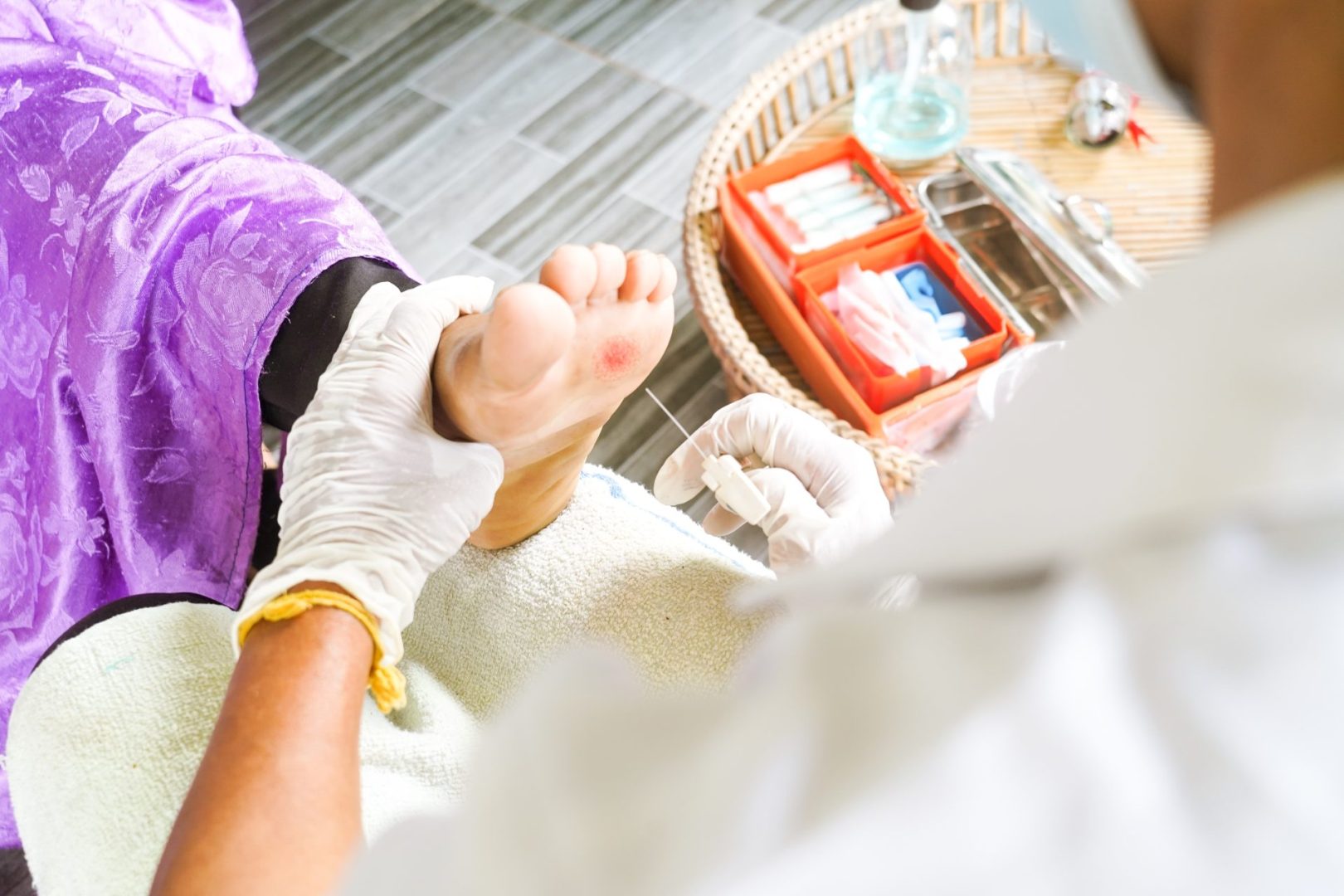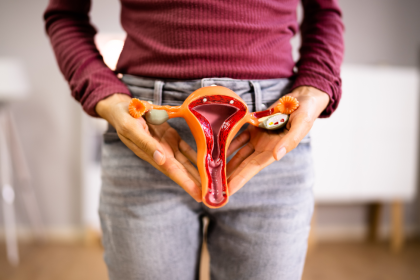Diabetes significantly complicates the wound healing process through multiple mechanisms that work against the body’s natural recovery abilities. High blood glucose levels damage blood vessels, reducing circulation to extremities like feet and legs where wounds commonly occur. This poor circulation means less oxygen and fewer healing nutrients reach the injury site.
Additionally, diabetes often causes neuropathy (nerve damage) that reduces sensation, particularly in the feet. This lack of feeling means injuries may go unnoticed for days or even weeks, allowing them to worsen significantly before treatment begins. By the time a wound is discovered, infection may already be present.
The immune system function is also compromised in people with diabetes, making it harder for the body to fight off bacteria that enter through breaks in the skin. This combination of reduced circulation, diminished sensation, and weakened immune response creates the perfect storm for wound complications.
Research shows that approximately 15% of people with diabetes will develop a foot ulcer during their lifetime, and without proper treatment, these wounds can lead to serious infections or even amputation. Understanding the specialized approach needed for diabetic wound care is essential for preventing these severe outcomes.
Immediate steps when discovering a wound
When a person with diabetes discovers a wound, rapid response is crucial. The first 24 hours after injury can significantly influence the healing trajectory. Begin by gently cleaning the wound with mild soap and water, avoiding harsh antiseptics that can damage tissue. Pat the area dry with a clean, soft cloth, being careful not to rub or irritate the wound.
After cleaning, apply an appropriate dressing based on the wound characteristics. For dry wounds, a moisturizing dressing helps create an optimal healing environment, while wounds with drainage require absorbent dressings that maintain moisture balance. Avoid traditional adhesive bandages on fragile skin; instead, use non-adhesive dressings designed for sensitive skin.
Most importantly, take pressure off the wounded area, especially for foot ulcers. Continuing to walk on an injured foot can drastically slow healing and worsen damage. Depending on the wound location and severity, specialized offloading devices such as diabetic walking boots, total contact casts, or wheelchair use may be necessary.
While handling these immediate steps, arrange for professional medical evaluation as soon as possible. Even apparently minor wounds should be assessed by healthcare providers experienced in diabetic wound care, as early intervention significantly improves outcomes.
Professional wound care approaches
Healthcare providers employ several specialized techniques when treating diabetic wounds. Debridement—the removal of dead tissue—is often the first clinical intervention. This process helps wounds heal by eliminating non-viable tissue that can harbor bacteria and impede new tissue formation. Depending on the wound, debridement may be surgical, enzymatic, mechanical, or biological (using medical-grade maggots).
Advanced dressing technologies play a crucial role in modern diabetic wound management. These include hydrocolloid dressings that create moist healing environments, alginate dressings that absorb exudate, antimicrobial dressings that reduce bioburden, and foam dressings that provide cushioning and absorption. The dressing selection depends on the wound’s characteristics, location, and drainage amount.
For wounds with significant tissue loss, negative pressure wound therapy (wound vacs) may be employed. This system applies controlled suction to the wound through a sealed dressing, removing excess fluid and promoting blood flow and granulation tissue formation. Studies show this approach can accelerate healing in certain diabetic ulcers by up to 43%.
Hyperbaric oxygen therapy represents another advanced treatment option, where patients breathe pure oxygen in a pressurized chamber. This dramatically increases oxygen delivery to tissues, stimulating healing factors and helping fight infection. While not appropriate for all wounds, research indicates it can reduce amputation rates for suitable candidates.
Bioengineered skin substitutes and growth factor treatments provide cutting-edge options for difficult-to-heal wounds. These products supply living cells, structural proteins, or healing factors directly to the wound, potentially jumpstarting stalled healing processes.
Nutritional support for wound healing
Proper nutrition plays a fundamental role in wound healing, especially for people with diabetes. Protein requirements increase significantly during the healing process, as the body needs amino acids to build new tissue. Clinical guidelines suggest consuming 1.2-1.5 grams of protein per kilogram of body weight daily when healing wounds—substantially higher than normal requirements.
Vitamin C is essential for collagen formation, which forms the structural foundation of new skin. Adequate intake from citrus fruits, bell peppers, and leafy greens supports this process. Zinc, found in meat, shellfish, and legumes, activates enzymes needed for cell proliferation and protein synthesis during healing.
Blood glucose management remains paramount, as elevated levels directly impair healing. Working with healthcare providers to optimize medication, diet, and activity can improve wound outcomes. A registered dietitian experienced in diabetes care can develop personalized meal plans that balance glucose management with enhanced healing nutrient intake.
Hydration also significantly impacts wound healing by supporting proper blood flow and cellular function. Many people with diabetes, particularly older adults, may have reduced thirst sensation and require conscious effort to maintain adequate fluid intake.
Preventing infection in diabetic wounds
Infection prevention represents a critical component of diabetic wound management. Signs of infection include increased redness, warmth, swelling, pain, odor, or drainage from the wound. Systemic symptoms like fever or elevated blood glucose without other explanation can also indicate infection.
Regular wound assessment helps detect infection early. This includes measuring the wound’s dimensions, evaluating tissue characteristics, and documenting any changes in appearance or drainage. Some providers teach patients to perform basic wound assessments between appointments, allowing for earlier intervention if concerning changes occur.
Proper hand hygiene before changing dressings or touching the wound area is essential. Using clean gloves during dressing changes and maintaining a clean environment for wound care supplies further reduces infection risk. Dressing changes should follow healthcare provider recommendations for frequency, which balances the need to keep the wound clean with minimizing disruption to healing tissue.
Systemic antibiotics are prescribed when infection is present or highly suspected, but aren’t typically used prophylactically due to resistance concerns. Topical antimicrobials may be incorporated into wound care routines based on clinical assessment.
Long-term care and lifestyle adaptations
Successful diabetic wound healing extends beyond the initial treatment phase into long-term management strategies. Regular foot inspections become a critical daily ritual for people with diabetes. Using a mirror to check the bottoms of feet or asking a family member for assistance ensures no new wounds develop unnoticed.
Footwear selection requires careful consideration, with properly fitted diabetic shoes and inserts providing pressure redistribution and protection. Custom orthotics may be necessary for those with foot deformities or previous ulceration. Wearing appropriate footwear consistently—even indoors—prevents injuries and reduces pressure on healing wounds.
Blood glucose management remains the foundation of prevention and healing. Research shows that each 1% reduction in HbA1c correlates with approximately 25% improved wound healing rates. Working closely with healthcare providers to optimize medication, diet, and activity levels supports not just wound healing but overall health.
Regular follow-up with podiatrists and wound care specialists allows for preventive care and early intervention. These appointments should continue even after wounds heal, as the risk of recurrence remains high without ongoing monitoring and care.
Emerging treatments and research directions
Diabetic wound care continues to evolve with promising research developments. Platelet-rich plasma therapy, which concentrates healing factors from a patient’s own blood and applies them directly to wounds, shows potential for accelerating healing in some studies. This approach harnesses the body’s natural regenerative capabilities to support tissue repair.
Stem cell therapies represent another frontier in wound healing research. Early clinical trials suggest that mesenchymal stem cells may promote tissue regeneration and reduce inflammation in chronic diabetic wounds. While still investigational, these approaches could provide options for wounds that don’t respond to conventional treatments.
Advances in smart dressings incorporate sensors that detect infection biomarkers before clinical signs appear, potentially allowing earlier intervention. Some prototype dressings even deliver antibiotics or growth factors in response to wound conditions, creating responsive treatment systems.
Telemedicine applications for wound monitoring enable patients to send wound images to healthcare providers for assessment between in-person visits. This technology particularly benefits those with mobility challenges or who live far from specialized care centers, allowing more frequent professional evaluation without the burden of travel.
Psychological aspects of wound healing
The psychological impact of diabetic wounds often receives less attention than physical aspects but significantly influences healing outcomes. Depression and anxiety occur more frequently in people with diabetic wounds, with studies showing rates up to 30% higher than in the general diabetic population. These conditions can affect treatment adherence, self-care behaviors, and even physiological healing processes.
Social isolation commonly results from reduced mobility, embarrassment about wounds, or fear of injury during activities. This isolation can further contribute to psychological distress and reduced quality of life. Support groups specifically for people with diabetic wounds provide valuable emotional support and practical advice from others with similar experiences.
Healthcare providers increasingly recognize that addressing psychological well-being represents an essential component of comprehensive wound care. Some specialized wound centers now incorporate mental health screening and support into treatment protocols, acknowledging the interconnection between mental and physical healing.
Effective diabetic wound healing requires a multifaceted approach combining medical intervention, nutritional support, infection prevention, and lifestyle adaptation. By understanding these specialized needs and working closely with healthcare providers, people with diabetes can significantly improve wound healing outcomes and reduce complication risks. The evolving landscape of treatment options continues to offer new hope for even the most challenging wounds.











